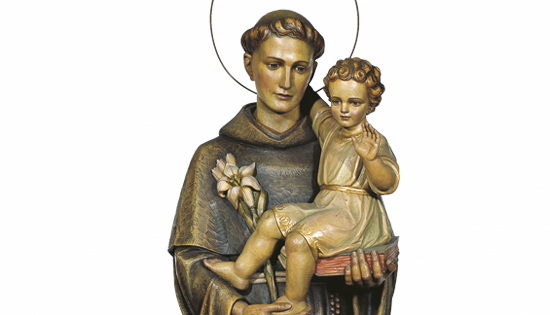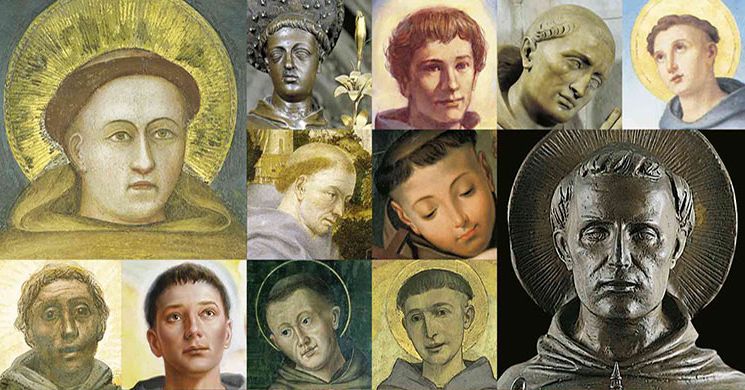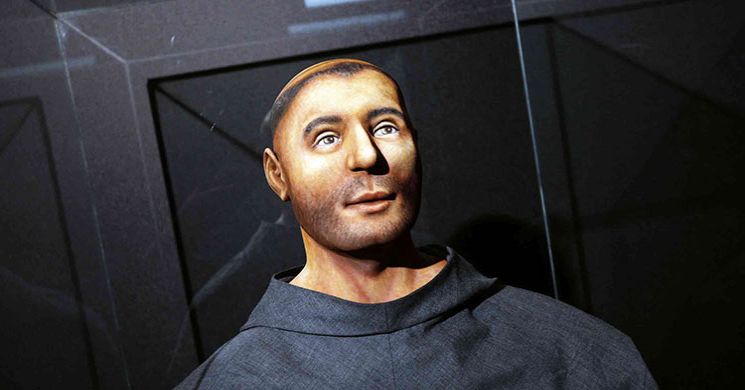Over the centuries, Saint Anthony has been represented by many artists, painters and sculptors. But how reliable are their depictions? Probably not very much, because the interpretations of the artists are influenced by the sensitivities of their age, the relevant hagiographic canons or by the request of devoted spectators.
The Scientific Examination of January 1981
The 1981 study, by contrast, offers precious and more reliable information, which furnishes a more truthful picture of his face and physical characteristics.
Anthony was about 1.71 meters tall. His head was elongated so his face must have been straight and narrow, with a prominent chin, aquiline nose, large eyes and healthy, regular teeth.
The upper half of his body wasn't very strong, but it was well-proportioned, with long hands and tapering fingers; the lower half was more developed, due to continual walking. His knees showed evidence of long periods of time spent in prayer.
The forensic reconstruction of the face
Previously, in 1981, the sculptor Roberto Cremesini had attempted a reconstruction of the face of the Saint from his skull, but more than thirty years later, in 2014, a forensic reconstruction of his face was made, which has given us a high degree of objectivity on his facial features.
The operation was conducted by the Museum of Anthropology of the University of Padua with the fundamental contribution of “Centro Studi Antoniani” and of Cicero Moraes, a well known 3D designer specialised in facial reconstructions in archaeology and a collaborator of the Laboratory of Anthropology and Forensic Dentistry (FOUSP) of the University of Sao Paulo (Brazil).
The portrait that emerged deviated partially from the tradition of a thin, stretched faced, as is evident even in Cremesini’s bust. The portrait is closer to the more "massive and corpulent” fresco found in a wall along the presbytery of the Basilica of Saint Anthony.



